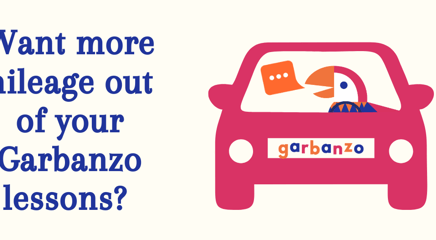A low-prep way to extend a Garbanzo lesson
Did you know you can extend your Garbanzo lessons to provide the most comprehensible input for your students? One of our favorite methods also engages students’ creativity by asking them to expand a text.
The idea here is that your students will be adding details like descriptive adjectives, inventive plot points, and interesting dialogue. What they add doesn’t have to be complex language--just bits of language that are interesting to THEM! There are lots of ways to modify this exercise, and we’ve provided some suggestions in the blog post.
Getting Started
First, choose a Garbanzo story without too many details to have them start with something basic.
Helpful tip: Use the Garbanzo Planning Companion to search for stories with low word counts (Aim for a word count between 30 - 100 words).
Need ideas? We suggest Ella es María, La viajera desconsiderada, El gato, Sophia y la puerta del armario, Ratón, La madre de mi amigo
Next, you’ll need students to get a copy of the text that they can expand. Consider projecting the full text for students to copy OR reading it aloud as students write it down -- à la dictation! Premium subscribers can zoom ahead to the last slide of the lesson and play the audio recording of the full text on the last slide.
Let's use the "La fiesta" Garbanzo as an example
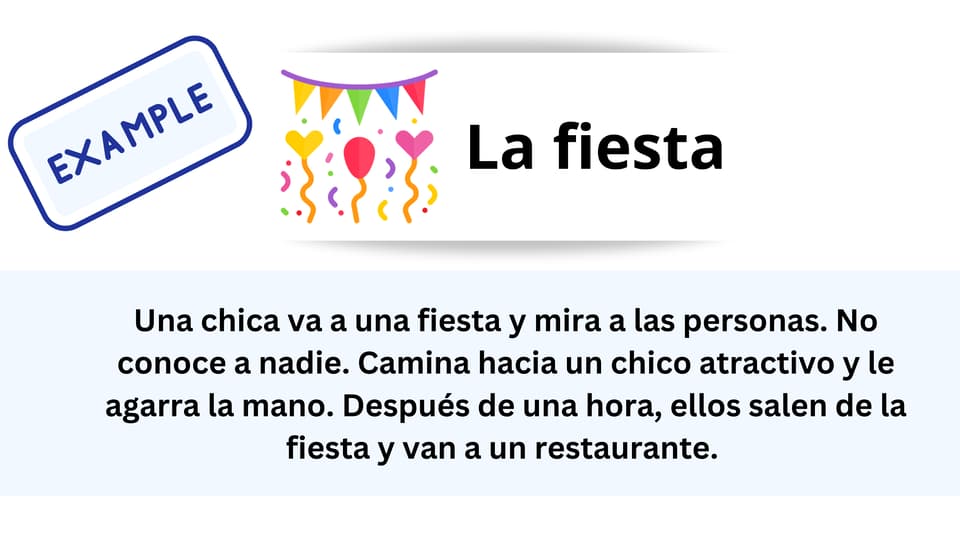
EXAMPLE: Una chica va a una fiesta y mira a las personas. No conoce a nadie. Camina hacia un chico atractivo y le agarra la mano. Después de una hora, ellos salen de la fiesta y van a un restaurante.
Provide students with ONE or more of the following ideas:
- Add at least one detail to every sentence of the story
- After every three sentences, add one more sentence to make the story more descriptive or interesting
- Add one adjective to every noun
- Add two new words to each sentence
- Add three sentences to the end of the story to make a new ending
They’ll complete the next steps individually. In the examples below, the added details are italicized in the text or in a different color in the images.
VARIATION 1: Add at least one detail to every sentence of the story
Depending on your students’ levels of language acquisition, you could either let them choose the details, or give them a list of options on the board.
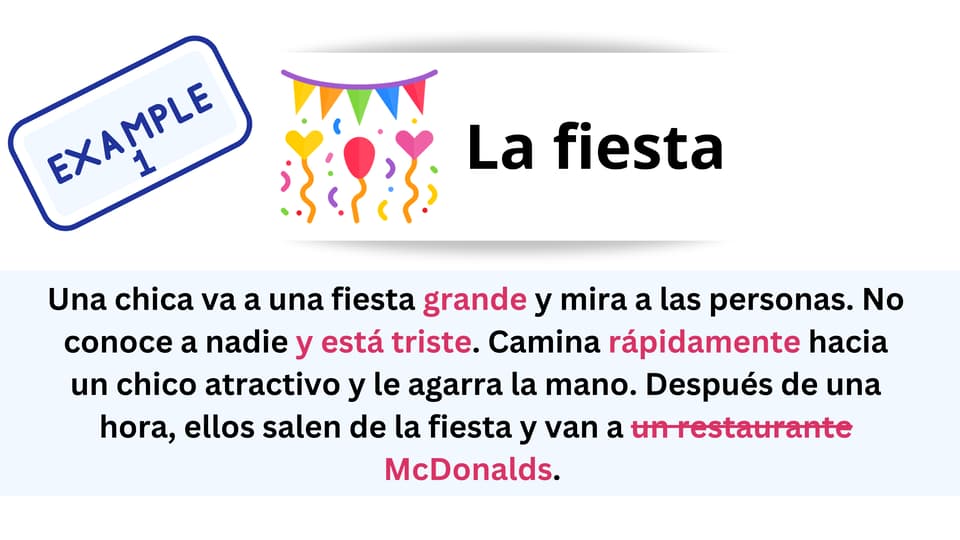
EXAMPLE: Una chica va a una fiesta grande y mira a las personas. No conoce a nadie y está triste. Camina rápidamente hacia un chico atractivo y le agarra la mano. Después de una hora, ellos salen de la fiesta y van a un restaurante McDonalds.
VARIATION 2: After every three sentences, add one more sentence to make the story more descriptive or interesting
This option takes the pressure off students to come up with too many sentences, but still gives them the time and space to get creative.

EXAMPLE: Una chica va a una fiesta y mira a las personas. No conoce a nadie. Camina hacia un chico atractivo y le agarra la mano. El chico le pregunta: «¿Cómo te llamas?». Después de una hora, ellos salen de la fiesta y van a un restaurante.
VARIATION 3: Add one adjective to every noun
Again, depending on your students’ levels of acquisition, you could either let them choose the adjectives, or you could provide them with a list. If you want to extend the reading even further, after you go through the initial reading, pick out the nouns with your students and have them underline the nouns so they know where to add the adjectives.
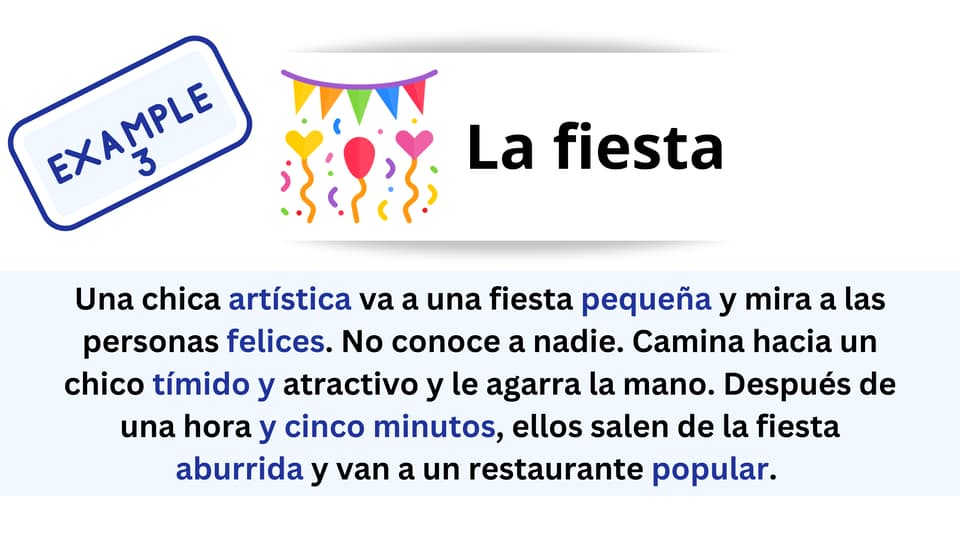
EXAMPLE: Una chica artística va a una fiesta pequeña y mira a las personas felices. No conoce a nadie. Camina hacia un chico tímido y atractivo y le agarra la mano. Después de una hora y cinco minutos, ellos salen de la fiesta aburrida y van a un restaurante popular.
VARIATION 4: Add two new words to each sentence
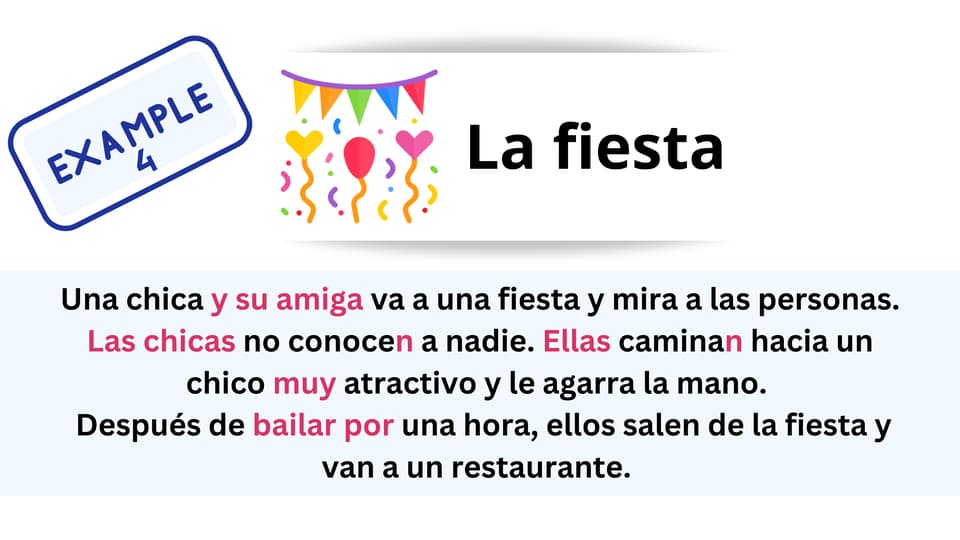
EXAMPLE: Una chica y su amiga va a una fiesta y mira a los personas. Las chicas no conocen a nadie. Ellas caminan hacia un chico muy atractivo y le agarra la mano. Después de bailar por una hora, ellos salen de la fiesta y van a un restaurante.
VARIATION 5: Add three sentences to the end of the story to make a new ending
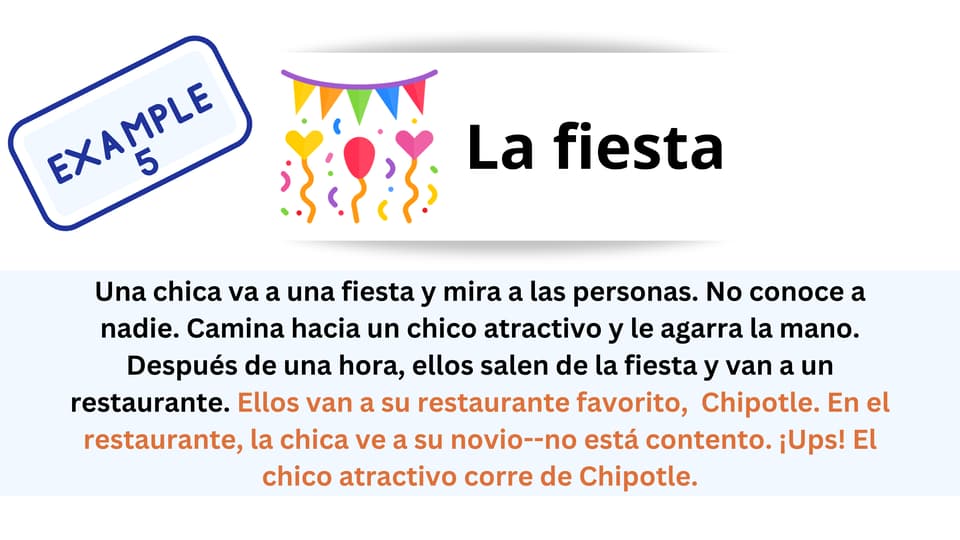
EXAMPLE: Una chica va a una fiesta y mira a las personas. No conoce a nadie. Camina hacia un chico atractivo y le agarra la mano. Después de una hora, ellos salen de la fiesta y van a un restaurante. Ellos van a su restaurante favorito, Chipotle. En el restaurante, la chica ve a su novio – no está contento. ¡Ups! El chico atractivo corre de Chipotle.
Follow-up Ideas
Go through the expanded texts and choose at least one addition from each student’s piece to make a master copy. Share the new, expanded text with the class, personalizing and circling.
Want to take it one step further and/or have extra class time to fill? After you’ve read through the expanded text, consider doing one of the following review exercises (as suggested by our sister company blog: The Comprehensible Classroom):
Simultaneous Acting: Divide the class into small groups. As you read through the story, have each group act it out simultaneously. Give out cheese awards for students who are really hamming it up!
Grudgeball: A highly competitive review game that engages students (and leads to high emotions). Fair warning: you’ll want to preface it with a reminder that despite the name, no grudges will be allowed after the game ends.
Class Storybook: Have students create a storybook of their expanded texts! You’ll divide the story into segments, and have groups of students illustrate each segment.

